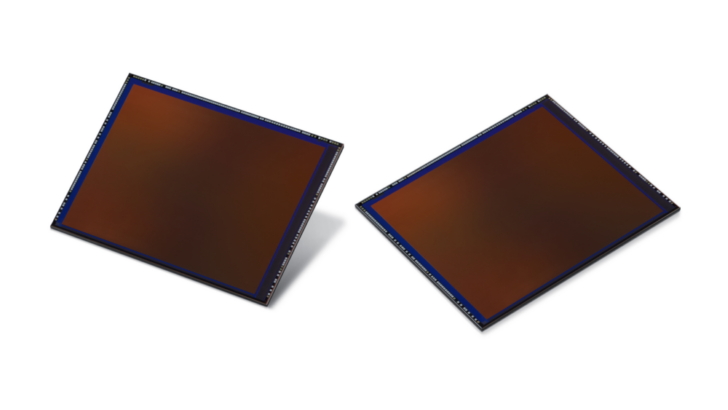[Video] Samsung’s ISOCELL Bright HMX Brings the High Performance of Professional Cameras to the Smartphone
on December 18, 2019
The advances made in recent years to mobile technology have resulted in some amazing user benefits – from enhanced productivity features to intelligent performance. But one feature that users consistently value highly is camera sophistication. Samsung Electronics is not only aware of this, but also works tirelessly to ensure that their camera technology remains cutting-edge.
Accordingly, Samsung has released its 108-megapixel (Mp) ISOCELL Bright HMX, the industry’s first mobile image sensor to exceed 100 million pixels. Boasting a resolution similar to that of a medium format expert-grade camera, this new image sensor not only enables the user to capture extremely sharp photos, but also allows them to do so in a wide range of adverse lighting conditions. Check out the video below to see the ISOCELL Bright HMX’s features and user benefits in-depth.
Bringing Professional-grade Quality to the Smartphone Camera
Following in the footsteps of Samsung’s expansion of its 0.8μm image sensor range, the ISOCELL Bright HMX delivers 108Mp – 108 million effective pixels – in each individual image. This pixel-count allows the camera to deliver extremely well-defined images that remain sharp even when zoomed in or cropped. The image sensor achieves this by utilizing 0.8μm-sized pixels, and is the first mobile image sensor in the industry to feature a larger 1/1.33-inch size. These features enable the ISOCELL Bright HMX to absorb more light in low-lit environments, allowing the sensor to ‘see’ more when formulating a photograph. In better-lit conditions, having a high-quality image sensor allows for sharper textures and better overall color accuracy.
Samsung’s ISOCELL Plus technology is another key component underpinning the ISOCELL Bright HMX. This advanced pixel isolation technology minimizes optical loss and prevents each 0.8μm pixel from being contaminated by the colors of the ones adjacent to it. Placing a barrier around each pixel, this technology represents a vast improvement on the previous backside illuminated (BSI) sensors, which were susceptible to quality degradation due to pixel crosstalk. Engineers also tried introducing a physical barrier between neighboring pixels, isolating them and allowing more light to be gathered by the micro-lens and absorbed by the photodiode, but this also led to optical loss. ISOCELL Plus technology replaces a metal barrier with an innovative new material that minimizes optical loss and light reflection. It also allows the photodiode to absorb more light, resulting in superb pixel performance, even with smaller pixel sizes.

The evolution of Samsung’s ISOCELL Plus pixel isolation technology
Sensor Technology for Best Performance in All Lighting Conditions
When pixels receive light information, that information is then subjected to analog gain or signal amplification before being converted into a digital signal by the analog digital convertor (ADC). ‘Native ISO’ is the baseline setting that a camera is set to that allows it to get the most detail out of an image, deviation from which can result in unwanted amplification or reduction of the sensor’s sensitivity to light. But with just a single native ISO, over-amplification can occur when conditions are very bright and unwanted noise can appear when an environment is low-light.
With the ISOCELL Bright HMX, Samsung has created a solution to mitigate these issues by incorporating Smart-ISO technology (including one low and one high amplification ISO) into the new mobile image sensor. The inclusion of this technology allows the sensor to intelligently select amplification levels according to how the scene is lit, optimizing light-to-electric signal conversation and making cameras more versatile across a range of lighting environments.
Notably, Samsung’s ISOCELL Bright HMX helps users manage the age-old question in photography of – how best to capture photographs in low-light conditions. While taking pictures with smaller pixels allows for better resolution, utilizing larger pixels is the best way to improve the sensor’s ability to absorb light. Thus, it has been necessary to find some kind of middle ground in which good quality photos can be captured in poorly lit environments. That’s where Samsung’s Tetrapixel* Technology comes in. In the ISOCELL Bright HMX, an advanced algorithm rearranges pixels according to lighting condition, merging clusters of four pixels into single pixels and allowing 0.8μm pixels to be transformed into 1.6μm ones. Even after merging of pixels, by having over 100 million pixels to start with, ISOCELL Bright HMX still ensures incredibly high 27Mp resolutions for great low-light photography.
As well as offering users advanced lighting condition management technology, the ISOCELL Bright HMX also features Super-PD autofocus for fast and accurate autofocus capabilities. Users can capture crisp, clear photos with precise focus of both still and moving objects, even in low-light environments.
Conventional autofocus capabilities require the processor to find the areas of highest contrast and employ a trial and error method to achieve an optimal focus. However, phase detection autofocus enabled by Super-PD technology means that mobile image sensors which feature PD pixels can quickly calculate how far away an object is and automatically optimize focus for the shot.
With the low-light, bright-lit and auto-focused movement photography capabilities offered by the ISOCELL Bright HMX image sensor, users will be able to capture those special moments in outstanding quality, no matter what the conditions may be.
For more information on how the ISOCELL image sensors are empowering users to capture moments with near-true-to-life mobile photography, check out the video below:
* Technological term of “Tetrapixel” was updated in July 2022.
